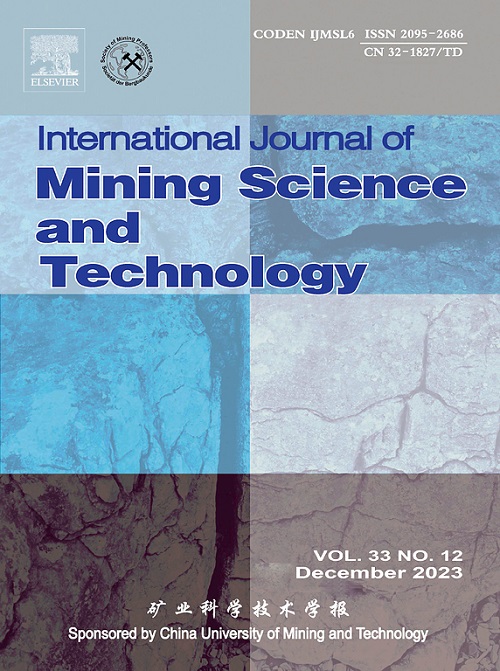Impact and mechanism of bisphosphonate depressant 1-hydroxypropane-1,1-diphosphonic acid on flotation decalcification of dolomite-rich magnesite ore
IF 11.7
1区 工程技术
Q1 MINING & MINERAL PROCESSING
International Journal of Mining Science and Technology
Pub Date : 2024-07-01
DOI:10.1016/j.ijmst.2024.07.003
引用次数: 0
Abstract
Given the depletion of high-quality magnesite deposits and the rising demand for high-end magnesium materials, the separation and utilization of high-calcium magnesite ores have become essential. However, the similar surface properties and solubility of semi-soluble salt-type minerals, pose significant challenges for the utilization of dolomite-rich magnesite resources. In this study, 1-hydroxypropane-1,1-diphosphonic acid (HPDP) was identified for the first time as a high-performance depressant for dolomite. Various tests, including contact angle measurements, ζ potential analysis, X-ray photoelectron spectroscopy, and atomic force microscopy, were conducted to elucidate the interfacial interaction mechanisms of HPDP on the surfaces of the two minerals at different scales. Additionally, molecular modeling calculations were used to detail the spatial matching relationship between HPDP and the crystal faces of the two minerals. It was emphasized that HPDP specifically adsorbed onto the dolomite surface by forming calcium phosphonate, ensuring that the dolomite surface remained hydrophilic and sank. Moreover, it was found that the adsorption strength of HPDP on the mineral surfaces depended on the activity of the metal sites and their spatial distribution. These findings provide a theoretical foundation for the molecular design of flotation reagents for high-calcium magnesite ores.
双磷酸盐抑制剂 1-羟基丙烷-1,1-二膦酸对富白云石菱镁矿浮选脱钙的影响和机理
鉴于优质菱镁矿藏的枯竭和对高端镁材料需求的不断增长,高钙菱镁矿的分离和利用变得至关重要。然而,半溶性盐类矿物具有相似的表面性质和溶解性,这给富含白云石的菱镁矿资源的利用带来了巨大挑战。在这项研究中,1-羟基丙烷-1,1-二膦酸(HPDP)首次被确定为白云石的高性能降解剂。通过接触角测量、ζ电位分析、X 射线光电子能谱和原子力显微镜等各种测试,阐明了 HPDP 在两种矿物表面不同尺度上的界面相互作用机制。此外,还利用分子模型计算详细说明了 HPDP 与两种矿物晶面之间的空间匹配关系。研究强调,HPDP 通过形成膦酸钙特异性地吸附在白云石表面,确保白云石表面保持亲水性并下沉。此外,研究还发现 HPDP 在矿物表面的吸附强度取决于金属位点的活性及其空间分布。这些发现为高钙菱镁矿浮选试剂的分子设计提供了理论基础。
本文章由计算机程序翻译,如有差异,请以英文原文为准。
求助全文
约1分钟内获得全文
求助全文
来源期刊

International Journal of Mining Science and Technology
Earth and Planetary Sciences-Geotechnical Engineering and Engineering Geology
CiteScore
19.10
自引率
11.90%
发文量
2541
审稿时长
44 days
期刊介绍:
The International Journal of Mining Science and Technology, founded in 1990 as the Journal of China University of Mining and Technology, is a monthly English-language journal. It publishes original research papers and high-quality reviews that explore the latest advancements in theories, methodologies, and applications within the realm of mining sciences and technologies. The journal serves as an international exchange forum for readers and authors worldwide involved in mining sciences and technologies. All papers undergo a peer-review process and meticulous editing by specialists and authorities, with the entire submission-to-publication process conducted electronically.
 求助内容:
求助内容: 应助结果提醒方式:
应助结果提醒方式:


